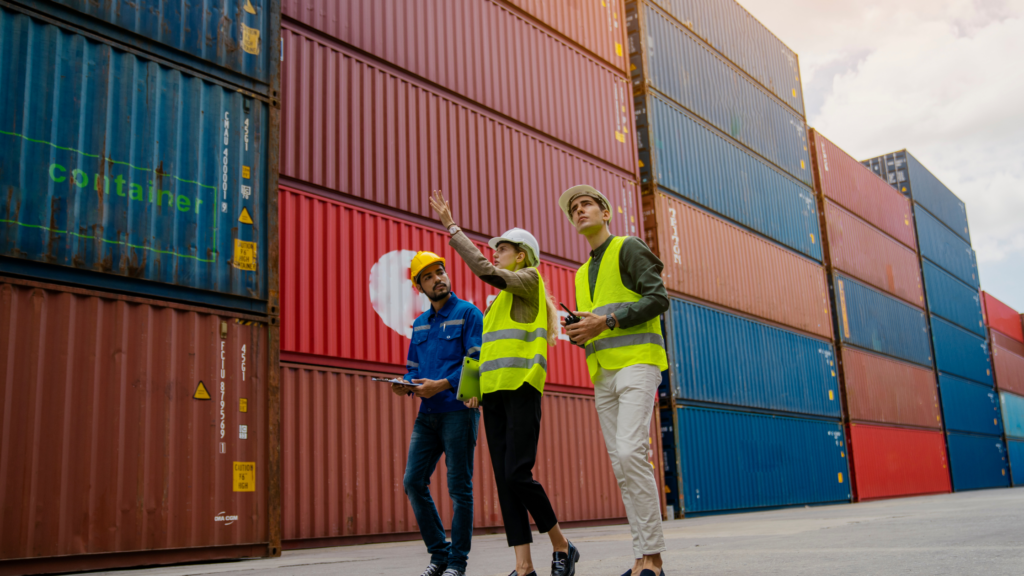The demand for sustainability is unstoppable, driven by increasing consumer awareness and investor expectations. According to a PwC survey, 64% of global consumers are worried about sustainability and consumers are willing to pay a premium of 9.7% for sustainably produced goods.
This rising demand is not just about consumer preferences; it is also about regulatory pressures. In 2024, the EU Corporate Sustainability Reporting Directive (CSRD) will require over 50,000 companies to disclose their environmental impacts.
Businesses must now intertwine ESG objectives into their supply chains to meet these demands if they’re hoping to achieve long-term value and sustainable growth. Sustainable supply chains are crucial in addressing environmental impacts, promoting social welfare, and ensuring economic viability. The question is, how do you make your supply chain sustainable?
By examining real-world examples and actionable insights, we aim to provide you with the knowledge and strategies to integrate sustainability into your supply chain effectively.

What is a Sustainable Supply Chain?
A sustainable supply chain integrates environmentally and socially responsible practices throughout the entire lifecycle of a product, from raw material sourcing to end-of-life disposal. Unlike traditional supply chains that prioritise cost and efficiency, sustainable supply chains balance economic performance with governance and social equity.
The 5 Key Components of a Sustainable Supply Chain
1. Ethical and Sustainable Sourcing
Ethical sourcing involves procuring materials in a way that respects human rights, labour laws, and environmental standards. This means selecting suppliers who adhere to fair labour practices and use renewable resources.
Example: Patagonia uses organic cotton, ensures fair labour practices, and regularly audits its suppliers to maintain high environmental and social standards.
2. Transparency and Traceability
Transparency and traceability build trust with consumers and stakeholders by openly sharing supply chain practices and tracking products from raw material to finished product.
Example: IBM’s Food Trust blockchain enhances traceability by allowing stakeholders to trace the origin and journey of food products.
3. Waste Reduction and Circular Economy
A circular economy aims to eliminate waste through recycling and repurposing materials. Sustainable supply chains design products for longevity and encourage recycling.
Example: IKEA’s furniture take-back programs and regular use of recycled materials, drive the company to be fully circular by 2030.
4. Lean Manufacturing
Lean manufacturing focuses on reducing waste and improving efficiency in production processes, lowering the environmental footprint.
Example: Toyota’s lean manufacturing principles emphasise waste reduction, continuous improvement, and efficient resource use.
5. Compliance and Reporting
Adhering to ESG regulations and transparent reporting are fundamental for accountability and continuous improvement. If you want to learn more about this, read our post on the UK’s new ESG legislation.
Example: The EU Corporate Sustainability Reporting Directive (CSRD) requires companies to disclose their environmental impacts, enhancing corporate transparency.
By integrating these five components, businesses can build sustainable supply chains that meet regulatory requirements, create long-term value, enhance brand reputation, and contribute to a more sustainable future.
Three Strategies for Building Sustainable Supply Chains
Building a sustainable supply chain is easier said than done. Businesses must integrate environmentally and socially responsible practices at every stage of the supply chain to succeed.
Here are some strategies that businesses can implement to achieve this goal:
1. Green Logistics and Transportation
One option is to use eco-friendly transportation methods. Transitioning to electric or hybrid trucks and promoting biofuels or hydrogen as alternative fuels can significantly reduce carbon emissions from logistics operations. Companies like DHL are investing in electric delivery vehicles and exploring alternative fuel options to minimise their environmental footprint.
The other option is optimising routes and loads. Utilising advanced logistics software to optimise delivery routes and loads can reduce fuel consumption and emissions. UPS’s ORION (On-Road Integrated Optimisation and Navigation) system has saved millions of miles and gallons of fuel by optimising delivery routes.
2. Digitalisation and Advanced Analytics
A good place to start is supply chain visibility. Implementing technologies like IoT and blockchain to track and monitor the supply chain in real time enhances transparency and traceability. IBM’s Food Trust blockchain platform provides detailed information about the journey of food products, ensuring safety and sustainability.
Otherwise, you can consider predictive analysis. Using AI and machine learning to predict demand and optimise inventory levels reduces waste and improves efficiency. Amazon uses predictive analytics to manage inventory and reduce overstocking, which minimises waste and enhances sustainability.
3. Ethical Sourcing and Supplier Collaboration
One of the best ways to ensure fair labour practices is to work with suppliers who adhere to fair labour practices and environmental standards. This way you can promise ethical sourcing. As mentioned earlier, Patagonia’s commitment to using organic cotton and ensuring fair labour practices through regular supplier audits sets a benchmark for ethical sourcing.
Otherwise, collaborative partnerships are a great place to segway. Try building strong relationships with suppliers to align on sustainability goals and conduct joint sustainability initiatives. Unilever collaborates with its suppliers to reduce environmental impact through its Sustainable Living Plan.
Conclusion
With governments introducing new sustainability regulations while requiring businesses to improve transparency in more areas than ever before, we believe sustainable growth in line with ESG standards is now an integral component of successful business transformation.
Consumers and investors are favouring businesses that are embracing and championing ESG with robust supply chains built for the future. By integrating innovative strategies, businesses can not only comply with new regulations but also drive long-term value and enhance their brand reputation.
If you need help building their strategies, we can help. By listening carefully to your unique needs, we craft innovative and bold strategies that enhance your sustainability practices.
Our agile team leverages deep expertise and shared values to integrate robust environmental, social, and governance principles into your operations. With over 15 years of business transformation experience under our belts, we are confident we can help.If you’d like to learn more about how our ESG services could help your business, please get in touch.


